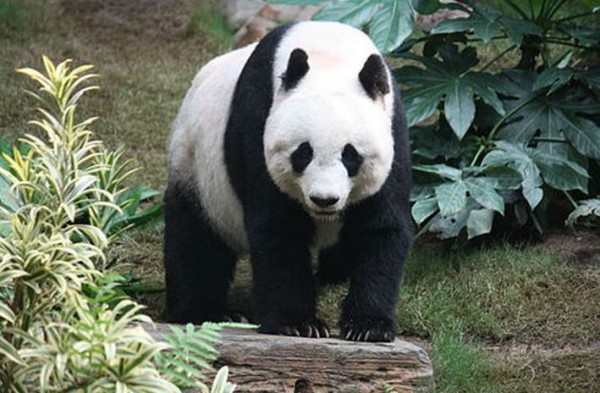Despite belonging to the order "Carnivora" that includes tigers and wolves, pandas eat only bamboo. In fact, 99 percent of a panda's diet consists only of bamboo and the creature spends up to 14 hours a day munching close to 30 pounds of this inedible grass.
Scientists now know the reason why. In a new study published in the journal mBio, Chinese scientists said giant pandas (Ailuropoda melanoleuca) lack the types of bacteria that break down cellulose, which is the main source of energy in bamboo.
They said giant pandas can digest only about 17 percent of the bamboo they eat, hence their need to eat and eat.
More ominously, this finding means the extinction of pandas might be all but inevitable.
"The animals also do not have the genes for plant-digesting enzymes in their own genome," said Zhihe Zhang, director of the Chengdu Research Base of Giant Panda Breeding in China and lead author of the study.
This flaw, he said, "may have increased their risk for extinction."
Xiaoyan Pang, a researcher at Shanghai Jiao Tong University, said the finding pandas don't have genes for plant-digesting enzymes is unexpected and quite interesting, because it implies the giant panda's gut microbiota may not have well adapted to its unique diet and places pandas at an evolutionary dilemma.
Researchers found the panda's gut microbiome is more closely related to that of carnivores, rather than other herbivores. Unlike other herbivores, giant panda's didn't develop an elongated digestive tract or enzymes to help break down tough plant parts, according to Nature.
To arrive at this conclusion, researchers sequenced ribosomal RNA in feces collected from 45 pandas of different ages over the course of a year. They compared the microbes found in the panda feces to those in the feces of other mammals, such as bears, lions, horses and kangaroos.
They found little diversity in the microorganisms in panda guts and none of the cellulose-degrading bacteria normally found in other plant-eaters.
Giant pandas, also known as panda bear, is a bear native to south central China.


